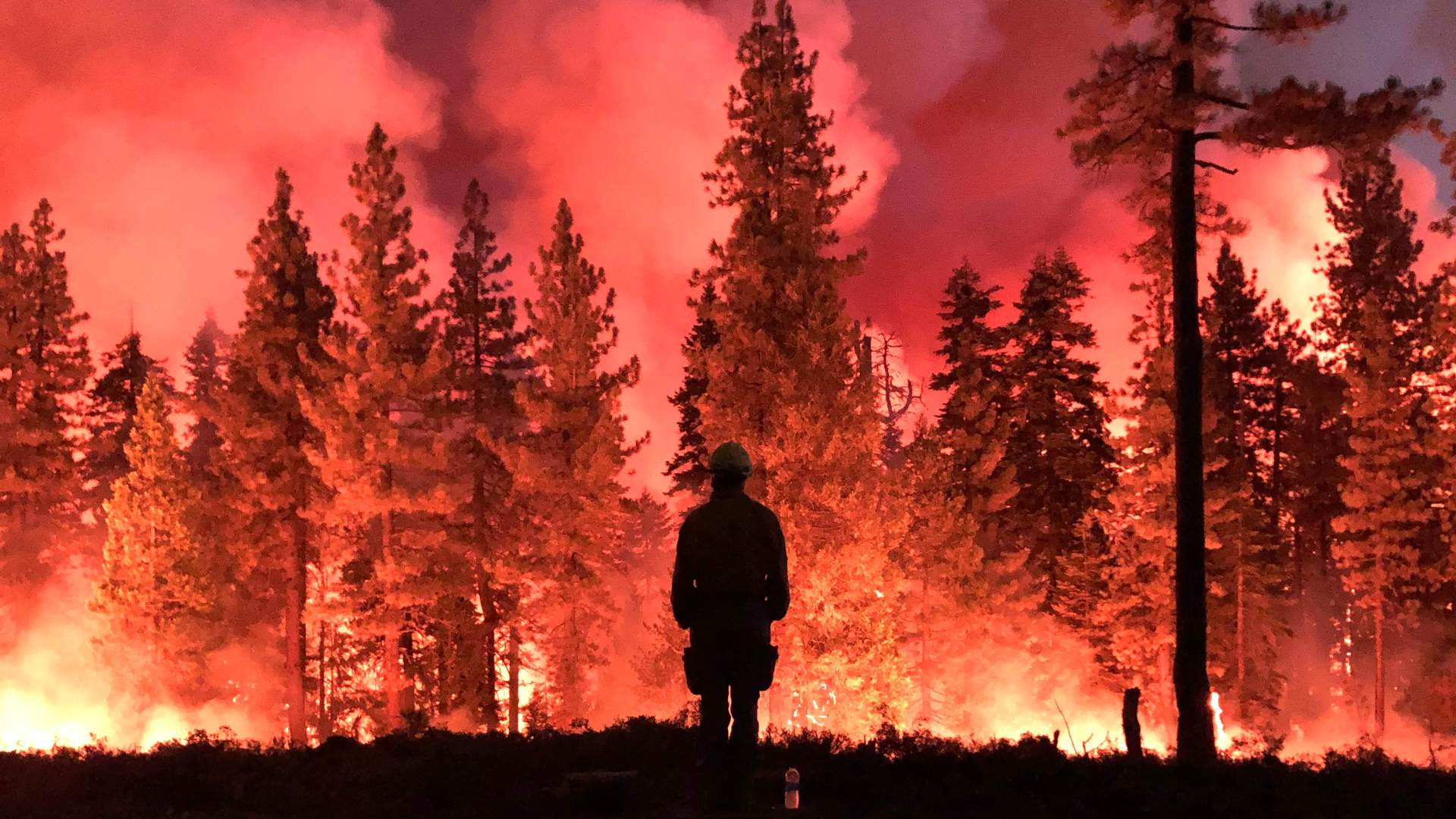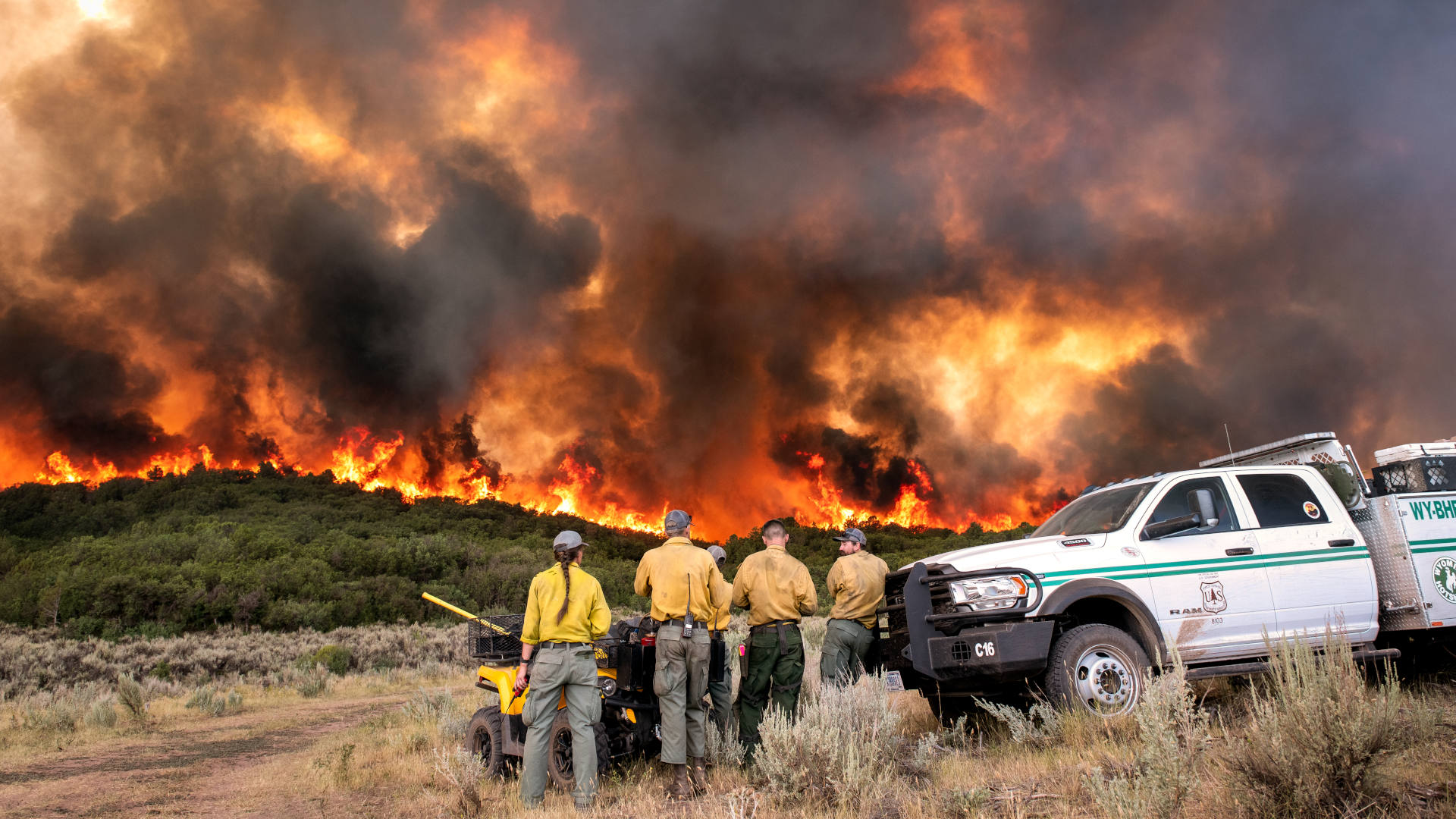On Maui, a solitary beachfront home, unscorched by the wildfire that devastated the town of Lahaina in August, stands amid the ashes of dozens of incinerated homes. And in Northern California, a large, mostly unscathed forest mysteriously surrounds the devastated town of Paradise, lost five years ago to another wildfire.
These puzzling scenes illustrate a difficult truth about wildfires. Many structures in these towns were destroyed by firebrands — hot burning embers that can be carried by strong winds over many miles — not by flames from the original fires. Nearly 200 people perished in the Lahaina and Paradise fires combined. Several other communities in the American West have been lost this same way.
The scenes also point to an obvious way to protect people from wildfire. The Lahaina home was recently remodeled, which unintentionally hardened the structure — making it resilient to fire.
Wildfires are a yearly threat to anyone living near a forest, grassland, or chaparral, which includes about half of all U.S. addresses. President Joe Biden’s administration has introduced an ambitious 10-year, $50 billion plan it claims will protect those homes, to be funded partly with taxpayer dollars and other sources yet to be determined. The administration’s plan focuses on a massive increase in logging across the country in order to reduce fuels in bone-dry forests. Very little will likely be spent on making homes near forests more fire resilient. But the fires in Paradise and Maui show that the administration is on the wrong course.
Reducing fuels usually means thinning, or partially logging, a forest, and later setting it on fire in a controlled burn. This strategy may make a fire less likely to spread but won’t always protect the public from one, according to John Winn, a U.S. Forest Service press officer. “There are no absolute guarantees,” he told us in an email, “particularly under extreme weather and fuel conditions.”
Disturbingly, the Forest Service is not informing the public about this concern. We reviewed several documents explaining the agency’s wildfire strategy to the public, which point to tree-cutting, usually followed by prescribed burns, as the way to reduce the risk that an ignition “could expose homes, communities, and infrastructure to wildfire.” The tone is uniformly upbeat and positive. There’s no mention of the harrowing firebrand threat and little to no information about how people can harden their homes — their only proven defense against them.
What’s more, the Forest Service often exaggerates the benefits of cutting down trees to prevent fire. For example, one of the agency’s informational videos gives sole credit to a forest treatment project, which included tree thinning and controlled burns, for slowing down the massive Caldor wildfire in 2021 and saving “businesses, homes, and lives” in the resort city of South Lake Tahoe, California. However, daily incident reports filed by fire supervisors on the front lines and media reports suggest something else was responsible for saving the town: The fast-moving fire’s progress stalled the very day the wind died down. The video does not disclose the full reason the fire slowed.
Many structures in these towns were destroyed by firebrands — hot burning embers that can be carried by strong winds over many miles — not by flames from the original fires.
“If the wind was still blowing the way it was, I don’t think South Lake Tahoe would have escaped the damage,” Craig Clements, director of the Wildfire Interdisciplinary Research Center at San José State University, and a certified firefighter, told us in a Zoom interview. Clements added that the treatment project “obviously helped, but people are forgetting the situation in the atmosphere and the weather basically changed overnight. So you have two causes of why that fire stopped.”
Tellingly, Forest Service Chief Randy Moore repeated this false narrative when justifying the thinning program before Congress last year. At his request, Congress forked over $3.5 billion as part of the Bipartisan Infrastructure Law to help fund it. Additional funds to make up the rest of the $50 billion could come from future appropriations and timber sale receipts.
Though relatively rare, large-scale wind-driven wildfires like Caldor are responsible for destroying the vast majority of structures burned by wildfire, according to a 2023 pre-print study by James Schmidt, a retired Forest Service geographical information systems analyst. An insurance industry group also found that up to 90 percent of burnt structures are first ignited by firebrands or fires set by firebrands. Tree-cutting is ineffectual against these raging wildfires because the firebrands they generate can easily fly over thinned forests and spark new fires in the distance. For example, during the 2017 Eagle Creek Fire in the Columbia River Gorge east of Portland, strong winds lofted firebrands across an interstate freeway, the expansive river, and another two-lane highway — a distance of about 2 miles — before starting another fire in the state of Washington. And, in a case study for the National Institutes of Standards and Technology, researchers found that strong winds carried firebrands from the 2018 Camp Fire almost 4 miles before dropping them onto rooftops in Paradise.
Tree-cutting is ineffectual against these raging wildfires because the firebrands they generate can easily fly over thinned forests and spark new fires in the distance.
While many researchers promote increased thinning as a way to address wildfires, a close examination of their research finds shortcomings with this approach when it comes to wind-driven fires. For example, fire ecologist Susan Prichard of the University of Washington and her colleagues conceded in a 2020 study that such fuel reduction treatments “can be overwhelmed in wind-driven wildfire events with extreme fire behavior.”
Some fire experts doubt cutting down trees could ever prevent wind-driven wildfires from causing destruction. “If we’re going to have these crazy, super fast-moving dry winds under very arid conditions, there is nothing we can do unless we’re willing to clear-cut all the forest,” Andrés Holz, a wildfire scientist at Portland State University, told us over Zoom.
As Chad Hanson, director of the John Muir Project, a California forest advocacy group, wrote in his book “Smokescreen,” “You can’t fight the wind with a chainsaw.”
If all goes according to plan, the timber industry will enjoy a financial bonanza, but the climate will take a significant hit.
The areas targeted for thinning contain some of the most economically valuable, old-growth and mature trees, including in national parks, national forests, roadless areas, and wildernesses. It seems likely that old-growth forests will be logged, and at least one project removing old-growth trees has already begun. These forests, many of which have never been logged, provide important wildlife habitat and are a vital carbon sink. In California, the industry expects to see two to 10 times their current processing capacity being removed from forests, said Helena Murray, a program manager for the Forest Service’s Wood and Biomass Utilization Program, at a public meeting in March.
Tree-thinning projects significantly reduce the amount of carbon sequestered in forests, according to a 2018 review study, worsening climate change. “Any thinning in MOG [mature and old-growth forests] is completely unnecessary and will do more harm than good,” Dominick DellaSala, chief scientist for Wild Heritage, a project of the Earth Island Institute, wrote to us in an email. “They will put more emissions into the atmosphere than the fires they hope to prevent.”
When we asked the Forest Service if an Environmental Impact Statement, or EIS, had been conducted on the agency’s overall wildfire strategy — which it ordinarily does before proceeding with any major project — press officer Wade Muehlhof wrote to us in an email that EIS are not done at the national level. Instead, he wrote, the Forest Service will analyze each project individually. But their analysis of a California tree-thinning project near several major wildfires in recent years provides no information about its climate or carbon impacts.
Nevertheless, the Forest Service is determined to proceed with its thinning program as its solution to what it calls a “wildfire crisis.” Though it has identified hundreds of communities at an even higher risk than Paradise, when we asked Winn how much funding from the Forest Service has been made available to help cover the costs of home hardening, he wrote “It is my understanding that grants and funding for home hardening is being handled by local municipalities and state governments.”
Kimiko Barrett, a Montana wildfire expert and member of Biden’s Wildland Fire Mitigation and Management Commission, pointed out in a webinar last year that there is no funding for mitigation measures at the home or parcel level, and insisted that such direct federal assistance to homeowners is urgently needed. “We have very, very flammable homes placed in very, very flammable locations,” she said.
Paul Koberstein and Jessica Applegate are co-authors of “Canopy of Titans: The Life and Times of the Great North American Temperate Rainforest.” This article was funded with a grant from the Fund for Investigative Journalism.












Comments are automatically closed one year after article publication. Archived comments are below.
This opinion piece pushes a disappointing black or white choice between structure hardening and fuel reduction. Hardening is a smart move, full stop. Fuel reduction may also be a smart move, even if it does not guarantee protection against wind-driven fires, since not all fires are wind-driven. Bottom line: We need far more nuanced reporting on these issues.
Should humans embark on yet another futile attempt to control Nature and make all our forests look like a city park? I have already written this up at https://kathleenmccroskey.substack.com/p/all-your-forests-are-at-risk
The one author above was right about “chainsaws”
How to address wildfire issues is a very complex set of problems and can’t be addressed by simply “hardening structures”. Not only is there concern for human health and safety, but expansive multidimensional environmental and ecological concerns. How should these concerns be addressed after over 100 years of effective wildfire suppression on landscapes that, for millennia, had been subject to Indigenous people’s intentional burning? What of ecosystems that depend on periodic fire to sustained the plant and animal communities found within for millenia? Wildfire suppression merely permits more vegetation, i.e., fuels, to accumulate. For the last 20+ years there has been messaging to the effect of leaving large older trees that can withstand fire and remove small trees followed by prescribed fire. Removing smaller trees by logging and subsequent prescribed burning reduces the volume, density and distribution of fuels that, when ignited, creates conditions that result in less severe wildfire and fewer embers with enough heat to begin new ignitions even in windy conditions.
This is disappointing. One likes to think agencies like the Forest Service would seek the public good instead of the “good” of their bureaucracy.
Governments are just so generally rotten. They seek to delude in the name of “their” greater good whether financial or structurally.
The country needs a Stewart Udall to clean up the Forest Service.
Great Article! My research indicates that after Wildfires in the Western States, that it appears that the Forest Service has quietly taken the approach of NOT cutting some trees burned in countless Wildfires, and therefore NOT planting Seedlings to replace them. Not even a decade or even 20 yrs. later?
Think about Seedlings that would have long ago become mature
enough to store Carbon & emit Oxygen; but instead aren’t doing so?
This is a critical mistake by the U.S. Forestry Service, if
it is so, and I have visual proof here in Colorado that it’s true.
Perhaps others in Western States can “confirm” this lapse in vital
Conservation efforts, after their Wildfires; which is obviously of great importance?